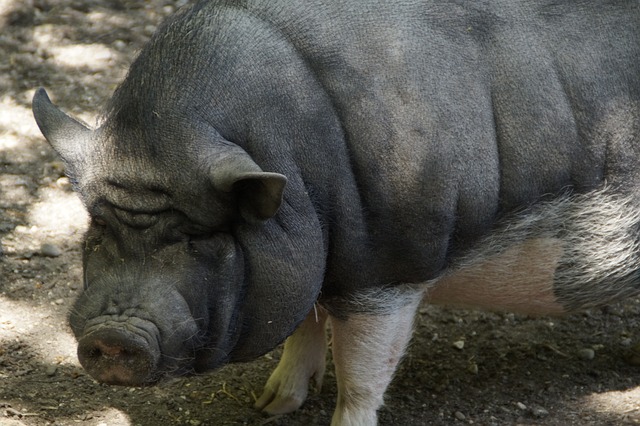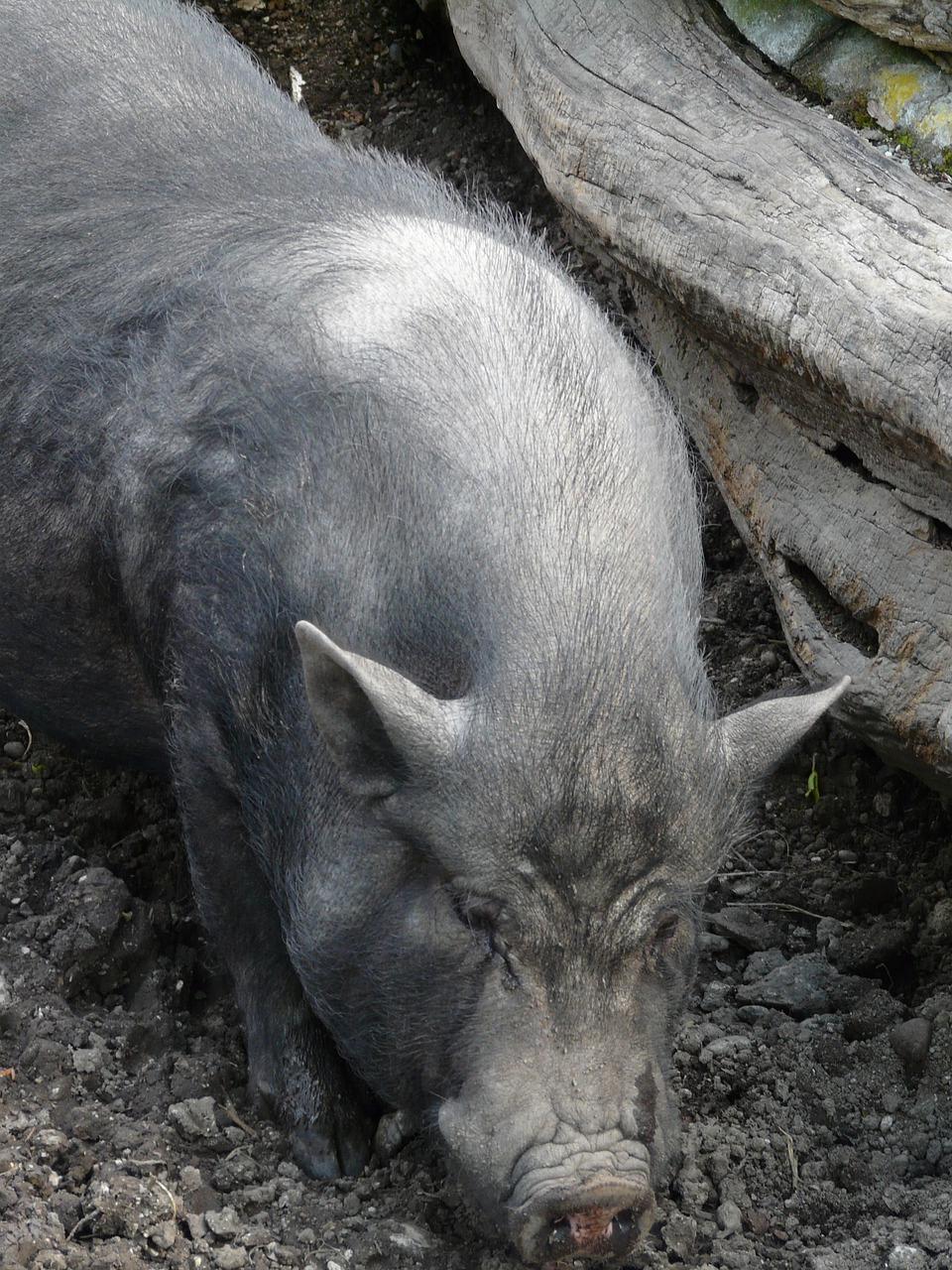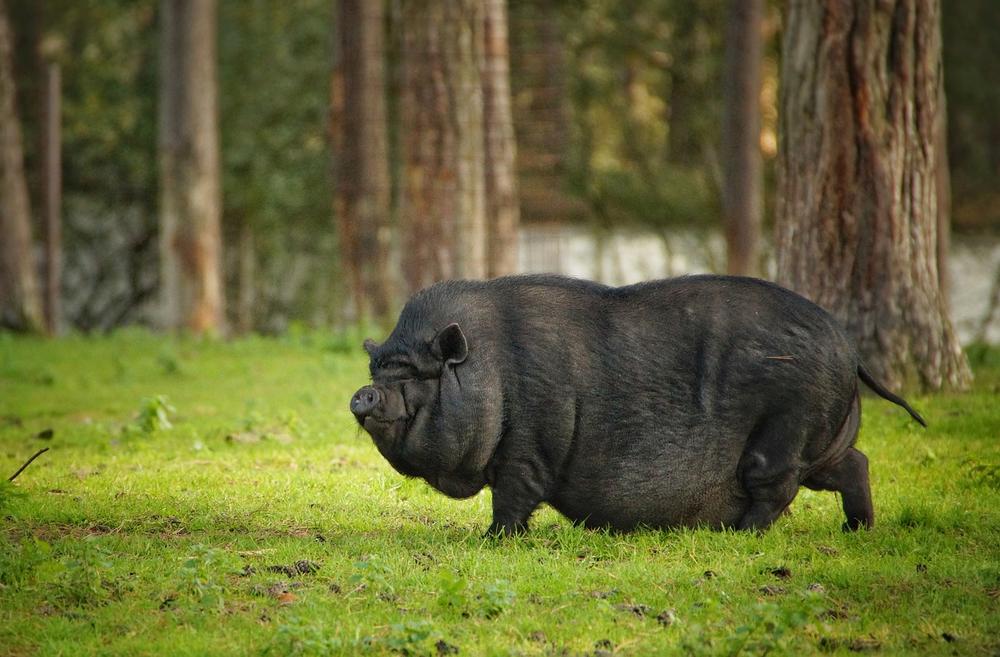Vietnamese Pot Bellied Pigs: The Most Complete Guide Ever

Tired of being in the dark about Vietnamese pot-bellied pigs?
Wondering if you have what it takes to be a pig owner? 😊
Trust me, I get it.
But fear not, my determined friend, because I've got your back.
Let's dive in and become pig experts together.
Understanding the Social and Behavioral Needs of Potbellied Pigs
Potbellied pigs thrive on social interaction and need a calm, consistent environment for their well-being. They enjoy the company of other animals and require a diet consisting of grains, fruits, vegetables, and high-quality pellets. You have to check local regulations before bringing one home.
Potbellied pigs are interesting creatures. They've been bred to be smaller and more manageable than traditional farm pigs, making them great pets.
In fact, they're quite popular among pet owners looking for a unique and sociable companion.
These pigs love the company of others, so they thrive on companionship.
If you bring one home, remember this important point.
You should provide them with a calm and consistent environment where they feel safe and secure. Trust me, they'll appreciate it.
Now let's talk about their diet.
Potbellied pigs aren't too picky.
They enjoy a balanced meal consisting of grains, fruits, vegetables, and high-quality pellets.
However, there are certain foods to avoid.
Stay away from chocolate, caffeine, onions, and specific fruits that might upset their delicate digestive system.
But let's move on from their diet and discuss regulations.

Before getting a potbellied pig, do your research and find out about local rules regarding pig ownership.
Each area may have its own restrictions, so make sure you're aware before bringing one home.
Here's something else to consider: potbellied pigs can be influenced by their surroundings and how they're treated.
So creating a calm environment is crucial.
Provide an atmosphere where they feel relaxed, safe, and loved.
Speaking of love, introducing your potbellied pig to other friendly animals can work wonders.
They love social interaction, and having another animal friend around can be a great source of entertainment and companionship for them.
Heck, getting them a companion pig could be the best decision you ever make!
To sum it up, potbellied pigs are fascinating and loving creatures that require our attention and care.
By creating a calm environment, ensuring they have a proper diet, and maybe bringing in more furry friends, you can give them the social interaction they need for a happy and fulfilling life.
Main points I'll expand upon further down this article:
- Proper training and socialization from an early age are crucial.
- Female potbellied pigs may experience hormonal changes during estrus.
- Pigs can be trained to perform tricks and follow commands.
- Regular veterinary check-ups and parasite prevention are necessary for health.
- Providing appropriate shelter, bedding, and grooming is important.
- Positive reinforcement is most effective for training pigs.
- Castration is recommended for male pigs to prevent aggression and cancer.
- Pig-proofing your home is crucial for their safety.
- Potbellied pigs require ample space and exercise to stay mentally and physically stimulated.
- Mental stimulation through toys and engaging activities is important for their well-being.
And let me tell you, introducing your potbellied pig to various environments is not only important for their well-being but also crucial for their adaptability and reducing anxiety in new situations.
I've found that proper training and socialization from an early age can make all the difference in ensuring a well-behaved pig.
So, let's dive into the significance of socialization and how it impacts their behavior and all in all development!
Enhancing Adaptability and Behavior Through Socialization and Bonding With Potbellied Pigs
If you want your potbellied pig to adapt and behave better, follow these 10 simple steps:
- Take them out to different places like parks or pet-friendly spots.
- Regularly let them meet new people and animals.
- Encourage positive interactions with both animals and humans.
- Make sure they have plenty of opportunities for playtime and exercise.
- Teach them some basic obedience training like sitting and staying.
- Use positive reinforcement like treats or praise when they behave well.
- Give them mental stimulation by using puzzle toys or food-dispensing toys.
- Stick to consistent rules and boundaries to create a structured environment.
- Ignore or redirect their attention when they show negative behavior, so you don't reinforce it.
- Begin socializing and bonding with them early on to ensure proper development.
Your potbellied pig's behavior and adaptability will greatly improve by implementing these strategies, resulting in a happier and better-adjusted companion.
And if you're wondering just how big potbellied pigs can actually get, I've got you covered! In my blog post How Big Do Pot Bellied Pigs Get, you'll find all the information you need to determine their size.
Managing Behavioral Challenges in Potbellied Pigs
If you're dealing with behavioral issues in your potbellied pig, here are 11 simple steps to effectively manage them:
- Give them specific spots to root around.
- Set up boxes with safe materials for them to dig in.
- Offer other ways for them to satisfy their rooting instincts.
- Keep an eye on and address any excessive rooting behaviors.
- Learn about the hormonal changes female pigs go through during estrus.
- Be prepared for behavioral problems while they're in heat.
- Use positive reinforcement to change aggressive behavior.
- Teach your pigs to redirect nipping behaviors.
- Deal with over-rooting by enriching their environment.
- Solve litter box issues with consistent training and reinforcement.
- Prevent destructive behavior in the house by giving them proper mental stimulation and outlets.
Effective Techniques for Training Potbellied Pigs
Implement clicker training for positive behavior reinforcement
You should try this incredible technique called clicker training.
It works wonders when training potbellied pigs because they are intelligent and respond well to positive encouragement.
Here's how it works:
- Get a clicker - a small device that makes a distinct clicking sound.
- Choose a behavior you want to reinforce, like sitting or spinning in circles.
- When your pig does the desired behavior, click the clicker and give them a treat right away.
- Repeat this consistently so your pig associates the clicker with being rewarded.
- Eventually, you can phase out treats and only use the clicker as a sign of good behavior.
Walking on a leash is beneficial for outings
A great way to bond with your potbellied pig and keep them happy and healthy is by taking them on walks.

Yes, pigs can be walked on a leash, just like dogs!
Walking your pig on a leash has several advantages:
- It provides exercise and prevents obesity.
- It stimulates their mind and avoids boredom.
- It allows you to easily take them to the vet or on outings.
Pigs may not know initially how to walk on a leash, so be patient and use positive encouragement techniques to train them.
The "Pig Programming" method for comprehensive training
If you want to train your potbellied pig seriously and teach them awesome tricks and obedient behavior, let me introduce you to the "Pig Programming" method.
This method is specifically designed for potbellied pigs and offers step-by-step instructions to guide you through the training process.
With approximately 182 pages of valuable information, it's a complete resource that covers everything you need to know.
So, if you're ready to take your pig's training to the next level, definitely check out this guide. It will provide you with all the knowledge and techniques you need to train your potbellied pig like a pro.
Establishing a Structured and Healthy Routine for Potbellied Pigs
If you want to keep your potbellied pigs healthy and happy, here's what you need to do:
- Keep a consistent daily schedule for them.
- Feed your pig at the same times every day.
- Set specific times to take them out for walks.
- Make sure to have regular play sessions with them.
- Give them engaging activities to keep them entertained.
- Take them for regular check-ups at the vet.
- Make sure they receive all the necessary vaccinations.
- Use appropriate medication to prevent parasites.
- Provide them with comfortable shelter and bedding.
- Trim their nails on a regular basis.
- Clean their ears when needed.
- Control their portions to avoid obesity.
- Encourage them to exercise every day.
Not giving them enough exercise or feeding them improperly can lead to weight gain and health problems.
Effective Training Techniques for Potbellied Pigs
I'll show you some effective techniques for training your potbellied pig:
- Use a clicker: Tap a small device to make a clicking sound and pair it with a yummy treat to reinforce good behavior.
- Break it down: Teach your piggy in manageable steps to avoid frustration or confusion.
- Be consistent: Use the same cues, gestures, and rewards every time so your pig doesn't get confused.
- Keep sessions short and frequent: Pigs have short attention spans, so make training sessions brief but regular throughout the day to keep them engaged.
- Mix up rewards: Offer different treats like fruits, veggies, and special pig snacks to keep your pig interested.
Training takes time and patience.
Stay persistent and celebrate each little success. With dedicated effort and these techniques, you'll have a well-trained potbellied pig in no time.
You've got this!
Managing Aggression and Dominance in Potbellied Pigs
To effectively manage aggression and dominance in potbellied pigs, follow these 10 simple steps:
- Promptly redirect aggressive behavior to a preferred activity or object.
- Distract and calm pigs down to avoid triggers for aggression.
- Consider castration as a preventative measure against aggression and testicular cancer in male pigs.
- Establish proper feeding etiquette during training.
- Prevent territorial or possessive behavior over food.
- Address any feelings of threat or neglect.
- Create a safe and secure environment for pigs.
- Provide ample mental and physical stimulation.
- Reward positive behavior and discourage negative behavior.
- Seek professional advice if the situation worsens.
It's vital to prioritize the well-being and safety of both pigs and those around them.
And it gets better...
Not only can potbellied pigs be trained to manage aggression and dominance, but they also possess a natural cleanliness that makes litter box training a breeze.
Imagine the convenience and peace of mind that comes with having a well-trained pig who knows where to go for their bathroom needs:
Effective Techniques for Litter Training and Housebreaking Potbellied Pigs
Consistency and positive reinforcement are key when training your potbellied pig to use a litter box.
Reward your pig each time they successfully use the designated spot. Pig-proofing your home is essential to protect against damage and keep your pig safe.
Potbellied pigs have a natural inclination for cleanliness, so training them to use a litter box or go outside for their bathroom needs is generally simple.
Recommended Pig Enthusiast Articles:
- Uncover if pigs perceive owners and comprehend emotions 👉 Can Pigs Recognize Their Owners
- Curious about pet pigs and dogs? Read more here 👉 Pig-Dog Compatibility
- Learn the secrets to bonding with your pet pig 👉 How to Bond With Your Pig
Promoting Exercise and Mental Stimulation for Potbellied Pigs Through Enrichment Activities
Potbellied pigs need exercise and mental stimulation to thrive.
So, here are some fun things you can do with your piggy to keep them happy:
- Create a cool obstacle course for them. Use tunnels, ramps, and hurdles. It's like a workout for their body and brain.
- Give them toys that let them root around like they would in nature. Puzzles or boxes filled with treats are perfect for this.
- Take your pig out for a walk. They love sniffing and exploring new places. Just ensure they're on a leash and can roam freely.
- Make a special digging area in your backyard. Fill it up with soft dirt or sand and hide their favorite treats or toys. They'll have a blast finding them!
- Don't forget the chewing! Offer them chew toys to keep their teeth healthy and satisfy their natural urge to chomp on stuff.
And hey, always ensure your pig has a clean and safe living space.
Check for any potential dangers or ways they could escape.
By doing these activities, you'll be keeping your potbellied pig happy, healthy, and super entertained!
And that's all for today folks.
If you wish to read more of my useful articles, I recommend you check out some of these: Pigs Chewing Cud, Do Pet Pigs Cause Damage, Miniature Pigs Complete Guide, How Big Do Micro Pigs Get, and Pig Communication Methods
Until next time,
-Chris Campbell